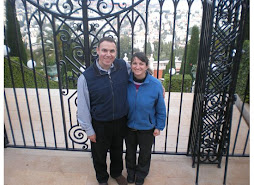I must admit that I rather enjoy the online social networking world. Whether it is the steady stream of updates from friends on Facebook, or the terse notes from those I follow on Twitter, these messages keep me in touch with people living across the street and across the ocean.
Yet, the question that keeps me up at night is whether social networks are a genuine form of community.
For me, the term community is defined by several characteristics:
First, communities unite people who share common traits or a common purpose. Communities are not random amalgamations of people, but rather, exist for explicit reasons. Moreover, people who belong to a community can define their affiliation.
Second, communities must have a sense of place. Often, groups that define themselves as a community will associate with a physical space, whether it is a church, a club, a neighborhood, a town or even a country, to bind them together. But whether such a place exists or not, a community must “reside” somewhere in order to sustain itself.
Third, communities must have boundaries. In some cases, they are geographical, such as a neighborhood. In other cases, they are the norms, rituals, practices or beliefs of the group. This sense of boundaries also characterizes that there are both insiders and outsiders in a given community (although the broadest definition of “community” would certainly include all those who would want to identify with it).
Finally, communities imply an ongoing connection between members of the group. Communities that exist through daily activity amongst their adherents are often the strongest ones, but whether the level of contact is constant or occurs episodically, communities require regular and habitual interactions between people to sustain themselves.
If these four points represent a kind of litmus test whether social networks are, in fact, communities, I find myself concluding that yes, they are. Indeed, whether it is an online network or a chat group, these sites create affiliations between people that are visible, accessible, definable and sustainable.
But how do I reconcile the fact that I’m rather uncomfortable with this conclusion? After all, in my professional life I’ve dedicated nearly two decades toward creating and strengthening the kinds of communities where one actually needs to be physically present to participate.
For me, the answer is that whether I like it or not, millions of people are creating new definitions for themselves of what it means to belong and to affiliate. Social networks help to facilitate these connections in ways beyond anything what traditional community planners could ever have imagined.
Looking ahead, social entrepreneurs seeking to strengthen communities in the physical world have much to gain from studying the dynamic nature of communities in cyberspace. Already there are exciting synergies between our digital and corporeal lives and I for one am looking forward to being a part of these new ideas.
But in the meantime, I’ll be updating my status and reading the latest tweets as I keep pondering future definitions of community.
Subscribe to:
Post Comments (Atom)

No comments:
Post a Comment